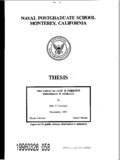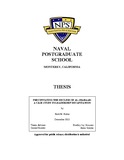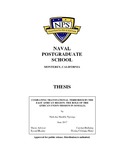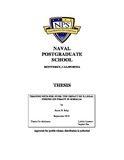The limits of Type D coercive diplomacy in Somalia
| dc.contributor.advisor | Moran, Daniel | |
| dc.contributor.author | Harrison, John C. | |
| dc.date | December 1995 | |
| dc.date.accessioned | 2013-04-29T22:49:39Z | |
| dc.date.available | 2013-04-29T22:49:39Z | |
| dc.date.issued | 1995-12 | |
| dc.identifier.uri | https://hdl.handle.net/10945/31322 | |
| dc.description.abstract | This thesis argues that the U.S./U.N. intervention in Somalia in 1992-1994 represents an attempt to use coercive diplomacy to re-create the Somali state. It further argues that the pre-conditions for a successful use of coercive diplomacy existed initially during the U.S.-led United Task Force (UNITAF) phase, but they quickly disappeared during the expanded mission of United Nations Somalia II (UNOSOM II). This thesis proposes that UNITAF leadership were quite successful in accomplishing their limited objectives. Additionally, when UNOSOM II assumed the mission in Somalia, the expanded mandates and policies chosen by both the U.S. and the U.N. changed the conditions for success and led the UNOSOM II forces to war with members of the Somali militia. | en_US |
| dc.description.uri | http://archive.org/details/thelimitsoftyped1094531322 | |
| dc.format.extent | 75 p. | en_US |
| dc.language.iso | en_US | |
| dc.publisher | Monterey, California. Naval Postgraduate School | en_US |
| dc.rights | This publication is a work of the U.S. Government as defined in Title 17, United States Code, Section 101. Copyright protection is not available for this work in the United States. | en_US |
| dc.title | The limits of Type D coercive diplomacy in Somalia | en_US |
| dc.type | Thesis | en_US |
| dc.contributor.department | National Security Affairs (NSA) | |
| dc.description.funder | NA | en_US |
| dc.description.recognition | NA | en_US |
| dc.description.service | U.S. Army (USA) author | en_US |
| etd.thesisdegree.name | M.A. in National Security Affairs | en_US |
| etd.thesisdegree.level | Masters | en_US |
| etd.thesisdegree.discipline | National Security Affairs | en_US |
| etd.thesisdegree.grantor | Naval Postgraduate School | en_US |
Files in this item
This item appears in the following Collection(s)
-
1. Thesis and Dissertation Collection, all items
Publicly releasable NPS Theses, Dissertations, MBA Professional Reports, Joint Applied Projects, Systems Engineering Project Reports and other NPS degree-earning written works.





